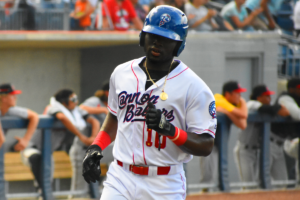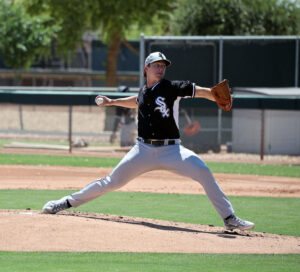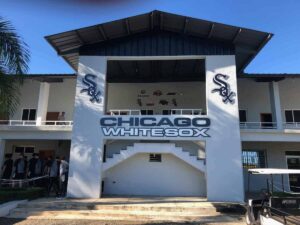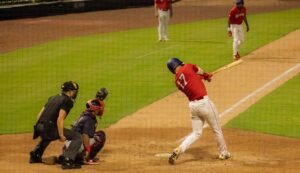Standout bats, intriguing arms lead next wave of Knights’ prospects
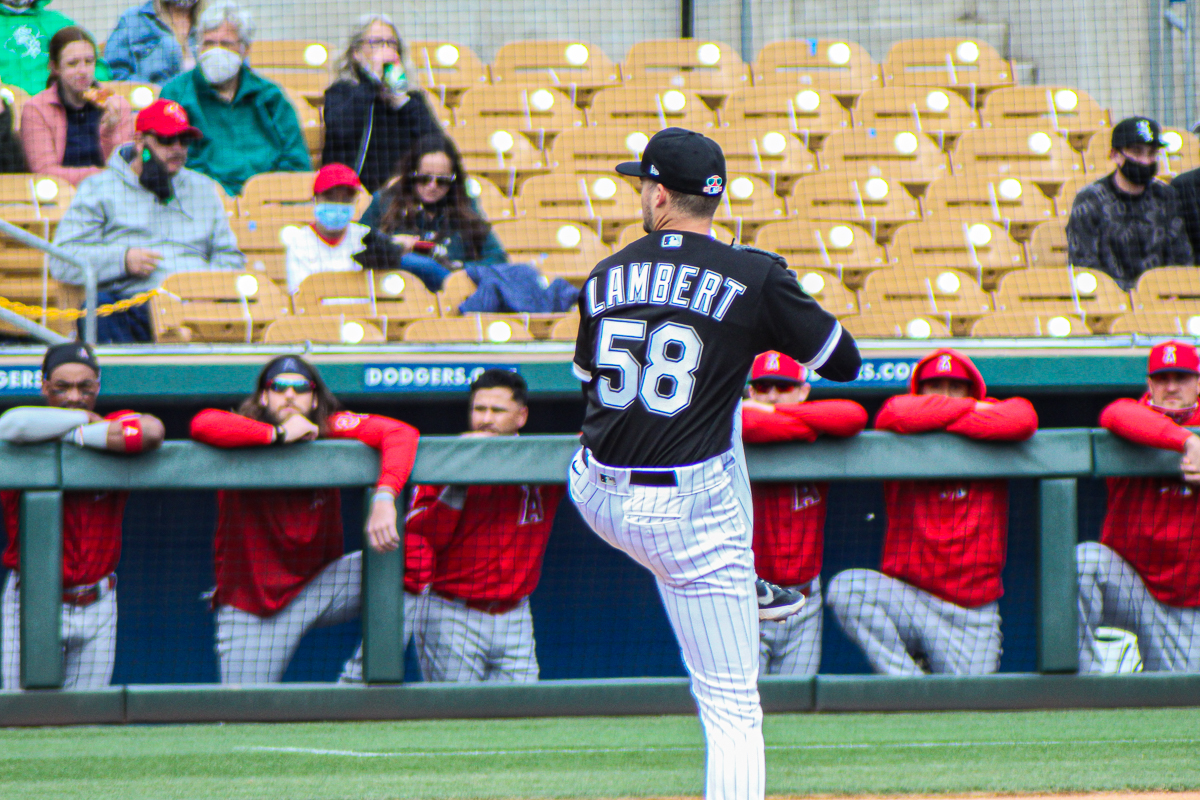
This is the second in a series of articles looking back on the Knights’ season by Charlotte beat writer Jeff Cohen. This installment looks at the handful of prospects with the Knights who have yet to get call-ups to Chicago.
The Knights carried only a handful of prospects this year, focusing instead on MLB veterans who could provide depth to a major league team with postseason aspirations. At the top of that prospect list were Micker Adolfo and Blake Rutherford. But Ti’Quan Forbes, Laz Rivera, Johan Cruz and Zach Remillard also fought with the veterans for valuable playing time.
On the mound, Jimmy Lambert and Jonathan Stiever were the prized pitching prospects. But there was also a steady stream of interesting young arms from Birmingham that included Anderson Severino, John Parke, Kade McClure and Bennett Sousa.
Micker Adolfo
Hitting coach Chris Johnson says it is Adolfo, not Jake Burger or Mikie Mahtook, with the most raw power on the team. Manager Wes Helms told me after Adolfo’s promotion to Charlotte that “he’ll do things that will amaze the fans and the guys in the other dugout.”
Adolfo had solid numbers in Charlotte, with 10 home runs and nine doubles in 150 at bats and a slash line of .240/.301/.513. His game clearly improved during the year, but injuries kept him off the field so much earlier in his career that he’s just about out of team control at a time when one more minor league season could very well unleash the true talents on this high-upside outfielder.
Adolfo is out of minor league options, meaning he must make the White Sox 2022 Opening Day roster in order to avoid being put on waivers.
In an interview just before the end of the season, Helms acknowledged that the White Sox may not have the luxury of carrying Adolfo on its major league roster next year. If that’s the case, Helms agreed that another team may very well claim Adolfo and put him on its MLB roster for all of 2022.
Could he handle a promotion to the major leagues in 2022, as crazy as it sounds?
“Outfield-wise, hands down he is a major-league outfielder right now,” Helms said. “He’s got an absolute cannon. Nobody is taking the extra base on him. They respect his arm. And now he is showing the signs at the plate of being a major-league hitter. If the White Sox (can’t carry him on the roster), no doubt Micker could go help another major league team next year.
“From 2019 when I had him before he had Tommy John, to the alternate site last year, to now, he’s night-and-day a different player,” Helms continued. “He’s probably one of the most improved players in the organization when it comes to hitting. So, 100 percent, I feel like he can go up there and hold his own and help a team.”
Helms agreed that Adolfo would probably be better served next year with additional at-bats in Triple-A.
“That’s true,” he said. “It is hard to learn the game at that speed with that pressure. It is a lot easier to learn it down here. Micker would have to see quickly how they are pitching him, and make that adjustment, because they are probably going to pitch him differently than they do here and if he does start hitting they’ll probably change how they are pitching him. But I think he has a (temperment) that can handle it. He’s real laid back, quiet. He doesn’t get too down or up. I think he would fight through it.”
Blake Rutherford
The future is much less certain for former 2016 first-round draft pick Rutherford. His numbers (.250/.286/.404) were not what you’d expect from a corner outfielder playing in hitter-friendly Charlotte, though he rebounded in August (.283/.308/.535) before tailing off again in September.
It is reasonable to believe that Rutherford’s spot on the White Sox’ 40-man roster is in jeopardy. He’s only 24, and with his pedigree, Rutherford should have multiple suitors.
However, Helms thinks Rutherford turned a critical corner in 2021, and sees a different ballplayer.
“You look at the things he might not have done well in 2019,” Helms said in late September. “He was hard on himself. After his first at bat making an out, he might sit in the dugout and pout. He would take his at bats to the outfield, where this year, you are starting to see signs of him not doing that. After he has a bad at bat, he comes and sits on the front step (and is into the game), or he runs out to the outfield and he’s making a diving catch. Those are the things in 2019 that I didn’t see and now I’m seeing that. And it just comes with growth. Those are the things that don’t show up in the box score.”
The Other Hitters
Among the others, Forbes and Rivera are most interesting. We’ll see if other teams think so, as both are Rule 5 eligible this off-season.
Acquired from the Rangers in 2017, Forbes was a 2nd-round pick in 2014. The glove played from the outset but he never hit enough for the Rangers and they traded him. And he didn’t exactly light it up in the White Sox system — until this year — when he raked .299 in Birmingham.
The Knights had a crowded infield for much of the year and Forbes often found himself getting on the field by manning first base. He looked excellent at third base during the brief times when Burger was out of the lineup.
It has been more of a mixed bag at the plate, but he has a shot at being a big leaguer and probably needs a full year at Triple-A to prove it. Whether he gets that chance with the White Sox is unclear.
A 28th-round pick of the White Sox in 2018, the unheralded Rivera moved quickly through the lower minor leagues, mashing in Kannapolis and Winston-Salem. He came back down to earth in 2019 in Birmingham, but improved this year in Double-A, earning a call-up to Charlotte in mid-July.
Rivera he hit the ground running in Charlotte, with a slash line of .317/.369/.483 through 18 games before a shoulder injury ended his season prematurely. Just prior to his injury, I asked Helms about the young infielder’s progress at the plate.
“He’s starting to handle the bat better where before he would give up at bats,” Helms told me in mid-August. “Now he’s not. He’s battling with two strikes and getting hits for us. He has shown a little power. He was a shortstop in 2019 and now he is at third and he is still getting comfortable with his footwork and his throws, but he’s impressed me. I told Chris Getz the other day that he’s impressed me with his at bats and how he locks it in on defense.”
The Young Hurlers
With Lambert having firmly established himself as first man up for a spot start, there is a trio of hurlers vying for the number two position.
Right now, it belongs to Stiever. The 24-year-old, 2018 fifth-round draft pick of the White Sox made 17 starts for the Knights this year before a lat injury in late August required season-ending surgery.
Stiever looked very good at times with 88 strikeouts and just 24 walks in 74 innings. But he was far from dominating for much of the year, and not nearly as consistent as he needs to be.
“Stiever still has some work to do,” pitching coach Matt Zaleski said. “He’s probably not pleased with his progress, but we are.”
As far as Kade McClure is concerned, Zaleski said the big right-hander’s season turned for the better in late August when he began pitching his fastball to the glove-side consistently.
“Being able to go there when he needs to go there,” Zaleski explained. “For a team with a lot of lefties, yes, his strength is arm-side but being able to go glove-side and go in so that they are not leaning out over on him to pull something to right field. His ability to get the ball in opens up his breaking ball and his fastball in.
“I think the next step in his progression is repeating two, three breaking balls in a row because I’ve seen with him in the past, one good slider, one good slider and then next thing you know he throws a third one that isn’t executed like the first two. To get to the big leagues, you may face a guy that you’ve got to throw five sliders in a row to and you’re going to have to be good with all of them.”
John Parke, meanwhile, doesn’t have the big fastball, which always makes the path to the big leagues harder. But the lefty had an excellent season with the Knights relying on a sinking fastball down in the zone to generate one ground ball after another.
Zaleski cited Dallas Keuchel as a good comp.
“I kind of talked to John a little bit about Dallas,” Zaleski said. “Their stuff is very similar, probably a different arm slot for John, but his ball moves like Dallas’. But Dallas has the command. So that is what John has been focusing on — keeping the sinker down, in the bottom third of the zone. When he’s down there, it is almost a 90% ground-ball rate.”
In the pen, Anderson Severino joined the Knights on August 24 and has dazzled with an electric fastball that frequently hit 100 on the gun. But he also has a nice curveball that is more than 20 miles per hour slower than the heater, which is a devastating combo.
“A hitter has to respect his fastball,” Zaleski said, “so if he can show he can land (the curve) from time to time, he’ll (be so tough to hit).”
Severino made 13 appearances for the Knights, and didn’t give up an earned run until his last one, in the final game of the season. He finished with 14 innings pitched, 9 hits and 20 strikeouts.
Zaleski said Sousa also had a nice year though his stats might suggest otherwise.
“It has been the story of his year that he didn’t give up one run in an inning, it ended up being multiples, which hurt his ERA and all that kind of stuff,” he said. “But he has done a good job here. He has a good fastball and an over-powering slider. There’s some stuff we discussed about what he can add to the repertoire or tweak in his delivery in the off-season, and hopefully that takes him over the hump.”
Photo credit: Sean Williams/FutureSox
Want to know right away when we publish a new article? Type your email address in the box on the right-side bar (or at the bottom on a mobile device) and click create subscription. Our list is completely spam free and you can opt out at any time. Also, consider supporting FutureSox on Patreon! You can get early access to special articles and Patreon-only posts, in addition to more benefits.
Shop our exclusive merchandise! Show your support with FutureSox apparel.

